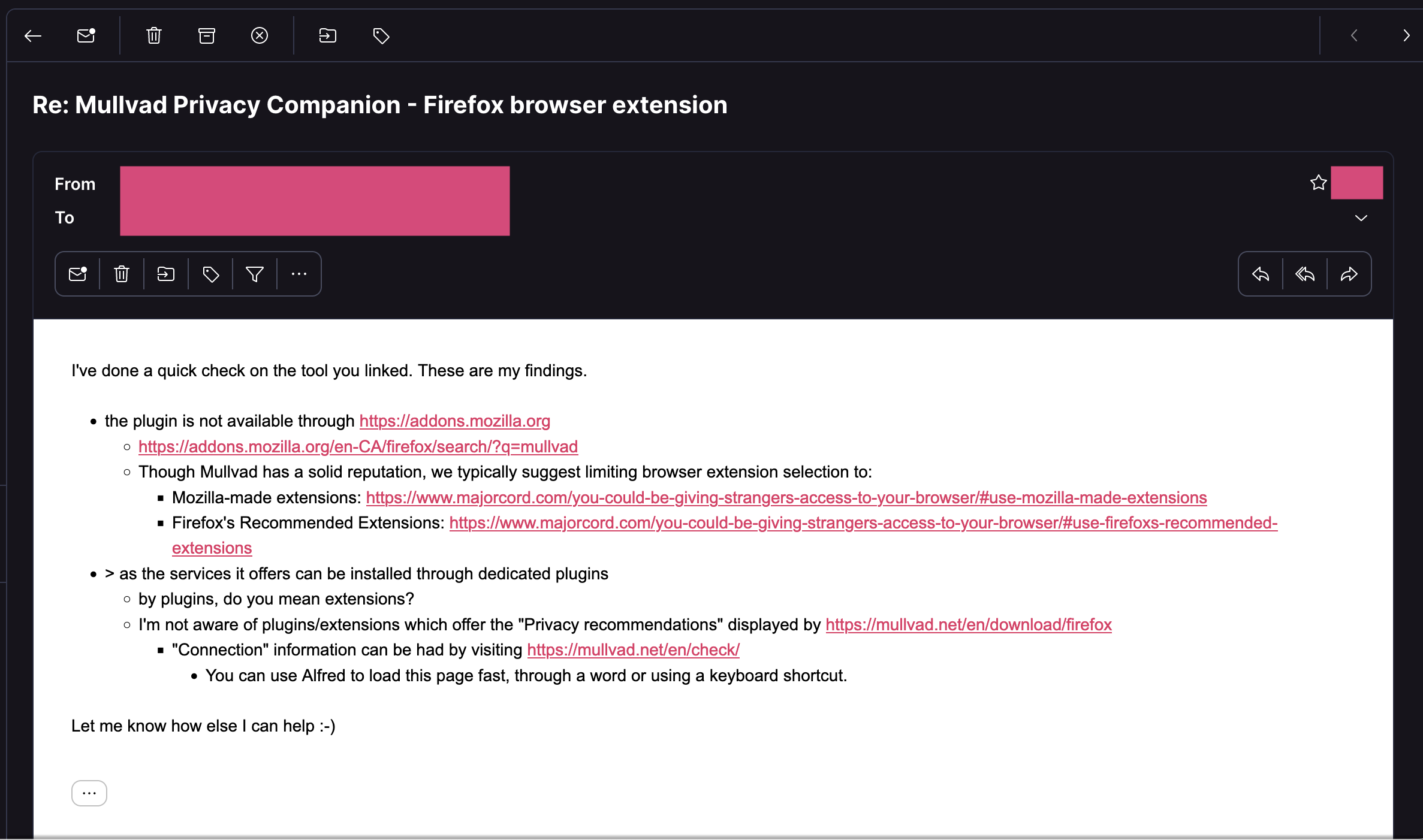I hope this email finds you well.
And other pointless, time-consuming, and possibly dangerous email rituals.
Email has been misused, abused, and derided so thoroughly that, let's face it, some of us switch to Slack or Signal as a way to avoid having to even think about better ways to use email.
Are there better ways to use email? Yes, there are. What are these better ways?
Much of our problem with email is behavioural. In other words, use email more thoughtfully. Consider this example of an email that is 75% useless.
Hi Kiran,
The file you requested is attached.
Best regards,
Casey
The only useful line is line 2, that is, Casey telling Kiran what the attached file is. 3 out of 4 lines are superfluous. We include lines like these out of habit, convention, and ritual.
An email first
The first email sent from space was in 1991. It has been 31 years since email reached space, not counting decades of prior Earth-based use, and we're still pretending that email only recently replaced letters-by-post.
Instant messaging, on the other hand, wasn't saddled with rituals originating in a technological age where the fastest method of delivery was carrier pigeon and horse 🐴
So, while our friends, family, and trusted business collaborators can message us on WhatsApp and Signal, email is used by the uncool and spammers to waste our time. Have a look at a structure common to emails:
Hi Santa,
A greeting.
I hope this email finds you well.
Well wishes. Isn't a greeting enough? Consider combining into greeting.
Attached is our formatted report for the reported flammability issue with the new portable fairy lights manufactured in our Rovaniemi workshop. We've isolated the problem to a faulty batch of batteries sourced from the new supplier. I've issued an advisory.
Stuff that's actually important.
I hope you have a good holiday.
Filler. Does Santa expect me to hope his holiday blows?
Sven
Sign-off. My email client displays the sender. Doesn't yours?
Head Production Elf
My title. The reason you, Santa, should pay attention.
Seen enough? Here's an alternative.
Hi Santa,
A greeting is still polite, especially in a new conversation.
Attached is our formatted report for the reported flammability issue with the new portable fairy lights manufactured in our Rovaniemi workshop. We've isolated the problem to a faulty batch of batteries sourced from the new supplier. I've issued an advisory.
Sven, Head Production Elf
Email isn't perfect, but it's still very useful. Email is interoperable (you can hook it up to many things), portable (one can take one's email from provider A to provider B; I challenge you to do that with WhatsApp messages), and is so inclusive that you can still access your email after losing your laptop to flooding caused by climate change. Just find a library. That isn't underwater.
Noise in email is an annoyance and a potential contributor to phishing. When we learn to habitually tune out parts of the email, we can mistakenly tune out potential red flags in phishing emails.
Flags and clues that we might have noticed, had we been accustomed to read the email in full, if past experience had taught us that every bit of information in received emails were relevant.
2 email rituals I'll avoid
1. I'll stop starting every email as if my correspondent and I just met

Saying "Hello" or "Hi" is perfectly fine when I start a new email thread. It's also a good idea when first responding to a new email thread. Afterwards, I skip the salutation.
Easy rule of thumb: each person in the email thread gets to say "Hi" or "Hello" once.
For subsequent emails, I pretend I'm using Signal or WhatsApp and jump straight into talking about stuff.
2. I'll stop wasting my, and their, time on ritualized fillers
Filler is unnecessary text in an email. Filler text includes generic well-wishes and sign-offs.
If I want to tell someone that I hope they're well, I'll do so with a subtle personal touch, like referencing something I remember from our last conversation. I'll be a real human, not a template-using robot.
And it's pointless to sign emails by typing text. Every email is includes information about the (apparent) sender. Every email client displays the sender when I read an email. It's usually somewhere visible, like at the top 🙄
And, the biggest facepalm: auto-filling a signature. Doing so tells my recipient that, not only have I failed to recognize the futility of email signatures, I have also automated the effort of including it. Meaning: it was effortless for me to clutter the screen of my recipient. Rude.
Last note about signatures, for those of us who kindly include logos so our recipients can fully appreciate the most recent expensive and borderline-unnecessary rebranding exercise. I migrated email service last month. Gigabytes of emails, and I bet a non-trivial use of storage were logos in auto-signatures.
One exception to avoiding signatures are emails from an address which is handled by more than one person. If you are one of two persons who typically respond from [email protected], make sure to drop your name somewhere, Rudolph.
I'll be using email more thoughtfully
Following email rituals serves nobody's interest except the instant messaging profiteers who don't mind that email friction accelerates a largely escapist move to their walled-off messaging platforms.
In short I'll be:
- Thoughtfully considering every bit of content I add to email.
- Using bullet points, and indented sub-bullets, to break up and organize my thoughts: walls of text are difficult to read and understand. Thanks to my mentor for modelling this method!

Happy emailing-and I hope you have a super week!
Best,
Manil